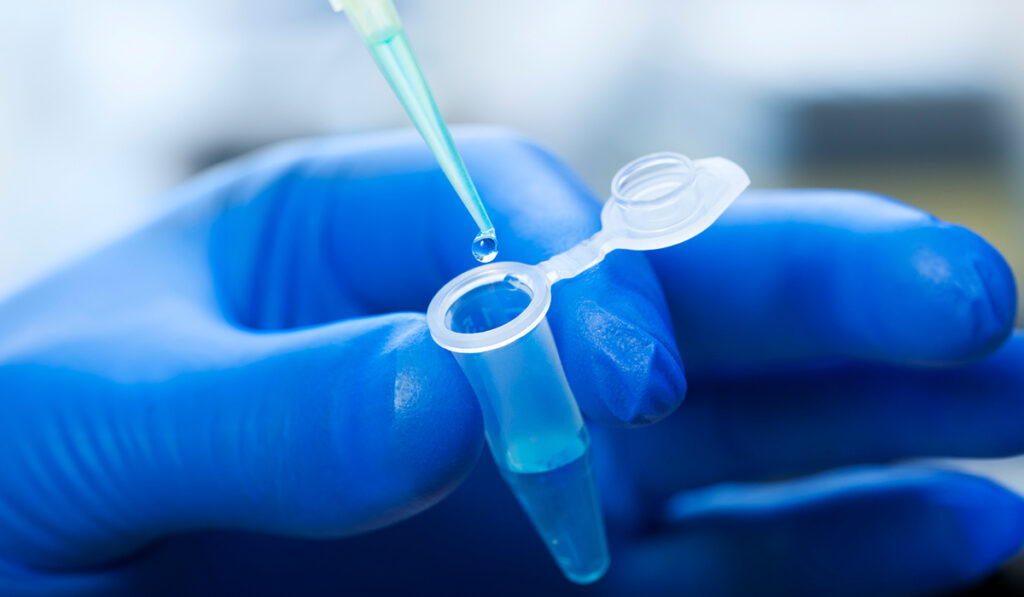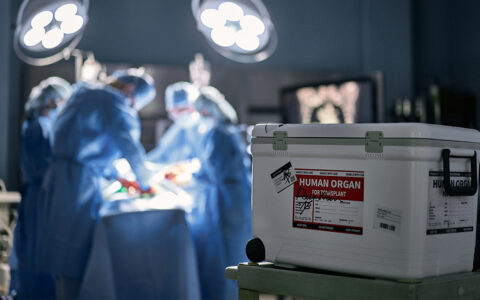Lung transplant recipients have a high rate of allograft failure compared to other solid-organ transplant patients, with a median survival of 6.7 years compared to more than 10-13 years for other types.
The leading cause of death in lung transplant recipients is chronic lung allograft dysfunction (CLAD), a complication with high risk of morbidity and mortality. The diagnosis of CLAD lacks reliable early biomarkers, however, and earlier detection could help address conditions that are significant risk factors for CLAD – including acute rejection, infections, and gastroesophageal reflux disease – to prevent their onset.
A team of Vanderbilt University Medical Center researchers led by Anil J. Trindade, M.D., a pulmonary and critical care physician, has been conducting a prospective cohort study to identify and validate a biomarker that could lead to the earlier diagnosis of CLAD.
Currently, CLAD is diagnosed using spirometry, which means that injury to the lungs has been ongoing for months prior to the disease being detected. This delay means that inflammation could lead to irreversible airway and parenchymal fibrosis. One of his team’s goals has been to utilize donor-derived cell-free DNA (dd-cfDNA) as a liquid biopsy that might unveil or predict CLAD onset, permitting earlier intervention.
“We believe donor-derived cell-free DNA may become standard in following allograft health. It reveals signs of rejection much sooner than spirometry and is less invasive than bronchoscopy screening,” Trindade said.
Collaborators on the project include Vanderbilt colleagues David Erasmus, M.D., Ivan Robbins, M.D., and Ciara Shaver, M.D., Ph.D.
Donor-derived Cell-Free DNA as a Biomarker
Dd-cfDNA relies on the fact that when cells are injured, they release their intracellular contents, including fragments of DNA, into the bloodstream. Since donor lungs have different DNA than the recipient, differences in key single nucleotide polymorphisms can be utilized to quantify the percentage of donor-derived cell-free DNA in the bloodstream.
Therefore, dd-cfDNA can be used as a surrogate of cellular injury in the allograft lung.
Liquid Biopsy
An important initial step towards the goal of liquid biopsy is to identify baseline levels of dd-cfDNA in patients that are over two years post-transplant, which the team recently demonstrated in a paper in Transplantation Direct.
“Surprisingly, we showed that baseline levels of dd-cfDNA don’t change very much in stable patients, whether they are three or 10 years post-transplant,” Trindade said.
His team has an ongoing registry study to capture patients that may develop CLAD in the future. They are trying to determine whether dd-cfDNA levels might rise several months before they experience spirometric changes, revealing a true biomarker that can predict chronic rejection.
Trindade and colleagues have also made other discoveries involving the use of dd-cfDNA in their patient population.
“To date, researchers in the field have always thought of using absolute thresholds of dd-cfDNA to define injury events,” he said. “Yet, we’ve found that changes relative to baseline values provide evidence of potential lung injury with greater sensitivity and specificity.”
These findings will be presented at the International Society for Heart and Lung Transplantation (ISHLT) annual meeting in April 2023.
Tackling Acute Rejection Hazards
Trindade and his team have their eye on other applications for dd-cfDNA. One project, which targets acute cellular rejection (ACR), garnered national attention and was a finalist in the 2022 ISHLT Innovation Challenge.
“This is one of the biggest risk factors for CLAD,” Trindade said. “Almost half of our patients will develop ACR within the first year post-transplant. The standard treatment is corticosteroid therapy, though up to 25 percent of patients do not respond to this.”
Again, the only current method for testing response is by performing invasive lung biopsies via bronchoscopy. Repeat biopsies are generally performed about four weeks after treatment, so a non-responder’s injury may be progressing while they wait.
In this project, Trindade and colleagues will work to identify differences in decay kinetics of dd-cfDNA within the first three days of therapy for ACR between steroid responders and non-responders. They will also compare biopsy samples with simultaneous peripheral blood samples to see if dd-cfDNA can be used as a biomarker of ACR recovery, potentially obviating the need for repeat biopsies. Finally, they plan to perform transcriptome profiling of peripheral blood mononuclear cells between steroid responders and non-responders to understand what signaling pathways are important to this process.
Award to Fund Pathogenesis Probe
Since ACR is a major risk factor for CLAD, this work may also shed light on the underlying pathogenesis of CLAD, about which very little is known. The research recently received additional support through a second investigator-initiated trial grant award from CareDx.
“This award allows the lung transplant team to take advantage of the strong clinical and basic science backgrounds of our team members and hopefully allow us to advance patient care and our understanding of ACR and CLAD,” Trindade said.





